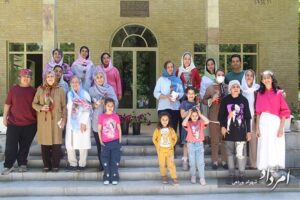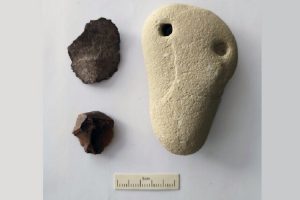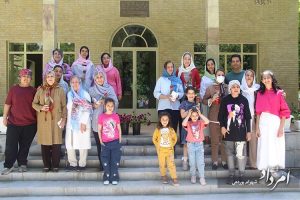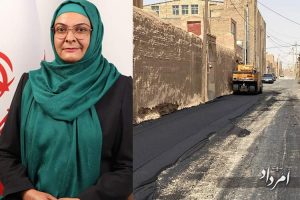Some archaeologists believe the first historical document that mentions Sivand (in Marvdasht, Fars) is the “Tang-e Khoshk” stone inscription. Another value of this inscription is from the linguistic, social, and religious point of view.
Tang-e Khoshk can be seen in a 20 km long straight with a width of 2 km. This canyon is located on the slopes of Sivand Mountain, only 200 meters away from its current dam. That canyon is also called Fashak. Among its other features is the road that is the connection between Persepolis and Pasargad. This road passes near Tang-e Khoshk.
Tang-e Khoshk also has many values from an ecological point of view, and the people of Marvdasht have a particular regard for its beauty. Although the vegetation of that area has been damaged by the drought of the recent years, it is still beautiful.
The stone inscription of Tang-e Khoshk is four meters long and 80 cm high. Its writing is in Sasanian Pahlavi script, and its three vertical lines have been clearly damaged. Farther on, at a distance of 20 meters, on the slope of the mountain, a stone basin has been found, which has a depth of fifty centimeters. One assumption is that it was an ancient grave.
Two readable inscriptions of Tang-e Khoshk are about donation of a garden area by Farrokh, son of Nariman. The other inscription of Tang-e Khoshk is so badly damaged that it is not readable. The lines are short with just few words on each line; like those that are called memorial inscriptions The first legible text has seven lines, and the second has 18 lines. Of course, some of its lines are not readable. From the 3rd inscription we can only understand that it has 18 lines and besides a few words the rest of the lines are completely damaged and therefore efforts to find the meaning of these inscriptions is useless.
What could be read from the Tang-e Khoshk inscription is as follows: Farrokh, son of Nariman, he ordered to donate the water canal, gardens, house and the smell of flower that… to someone… from… if he died. In the third year, in the month of Sepandarmaz, Khor… to… and house… garden… him was his son.”
This fragmented writing can be rewritten as follows: Farrokh, son of Nariman, donated the vineyard, flowers, trees, and house he owned in the month of Sepandarmaz.
The value of Tang-e Khoshk stone inscription is of great value because it contains signs of social and religious history; in addition, its value from the point of view of archeology and a relic (although badly damaged) of the distant past of this land. Its linguistic values should be noticed too. From the readable lines, we can understand a part of the style of speech and writing of Iranians in the sassanid period. It is also worth noting that this stone was inscribed in the era of Sassanid Khosrow II.
The current state of Tang-e Khoshk reliefs
From the field report that Siavash Arya, an activist of cultural heritage, tourism and ecosystem has given from Tang-e Khoshk, it is obvious that the smugglers and looters of ancient artifacts have caused even more damage to the stone inscriptions and have dug on the south and north of it to find historic objects. Its surroundings are also full of garbage and small stones, and neglect makes the remaining lines more illegible day by day. Cracks are also visible on the rock. Nothing has been done to cover it and prevent more damage from rain, snow and sharp sunlight; air pollution has also caused increased damages. Arya wrote: “If we don’t find a solution for this matter as soon as possible, we will face its death in the not-too-distant future.” Meanwhile, this ancient monument is registered nationally!










